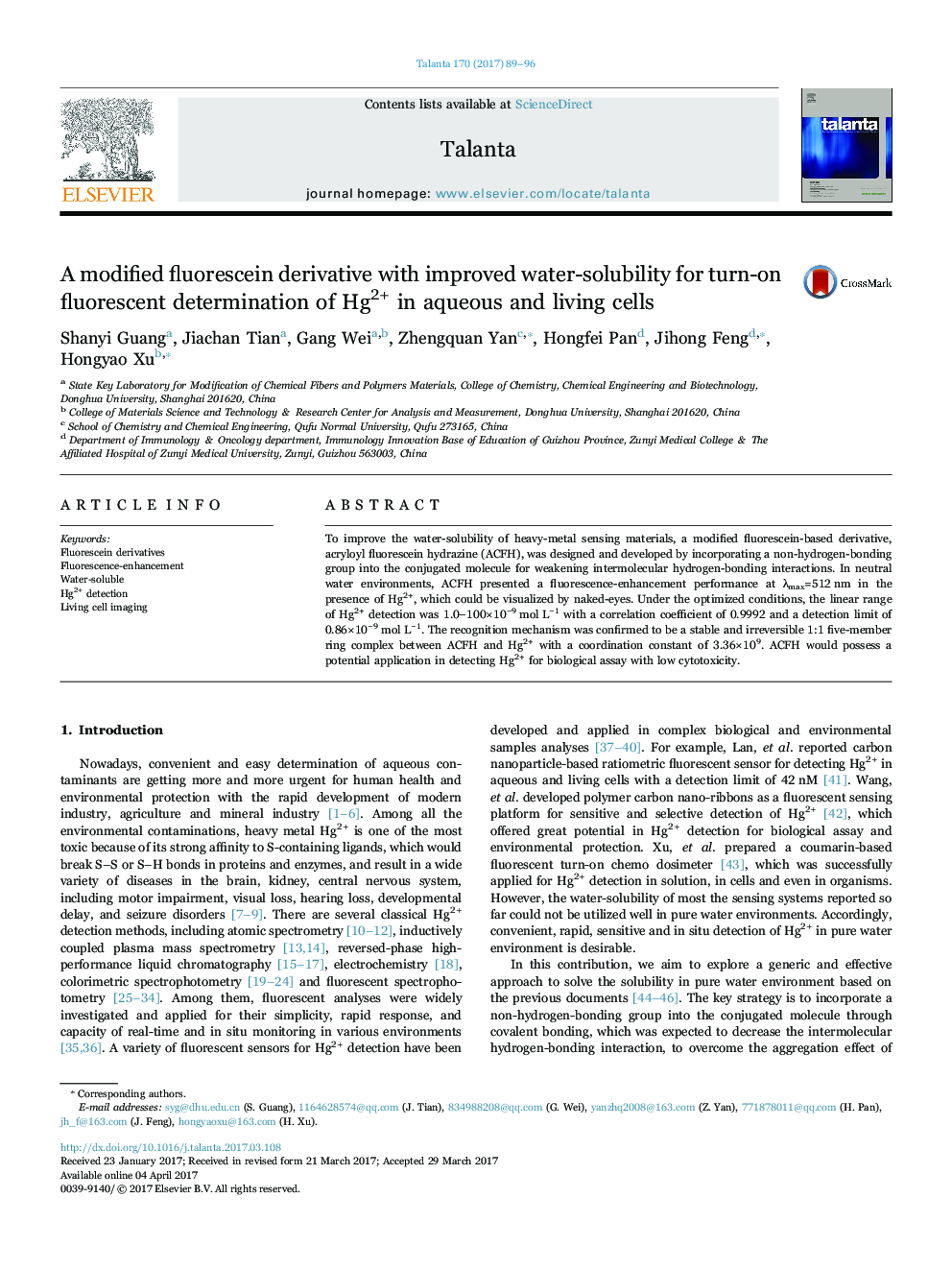| Article ID | Journal | Published Year | Pages | File Type |
|---|---|---|---|---|
| 5140693 | Talanta | 2017 | 8 Pages |
Abstract
To improve the water-solubility of heavy-metal sensing materials, a modified fluorescein-based derivative, acryloyl fluorescein hydrazine (ACFH), was designed and developed by incorporating a non-hydrogen-bonding group into the conjugated molecule for weakening intermolecular hydrogen-bonding interactions. In neutral water environments, ACFH presented a fluorescence-enhancement performance at λmax =512 nm in the presence of Hg2+, which could be visualized by naked-eyes. Under the optimized conditions, the linear range of Hg2+ detection was 1.0-100Ã10â9 mol·Lâ1 with a correlation coefficient of 0.9992 and a detection limit of 0.86Ã10â9 mol·Lâ1. The recognition mechanism was confirmed to be a stable and irreversible 1:1 five-member ring complex between ACFH and Hg2+ with a coordination constant of 3.36Ã109. ACFH would possess a potential application in detecting Hg2+ for biological assay with low cytotoxicity.
Related Topics
Physical Sciences and Engineering
Chemistry
Analytical Chemistry
Authors
Shanyi Guang, Jiachan Tian, Gang Wei, Zhengquan Yan, Hongfei Pan, Jihong Feng, Hongyao Xu,
